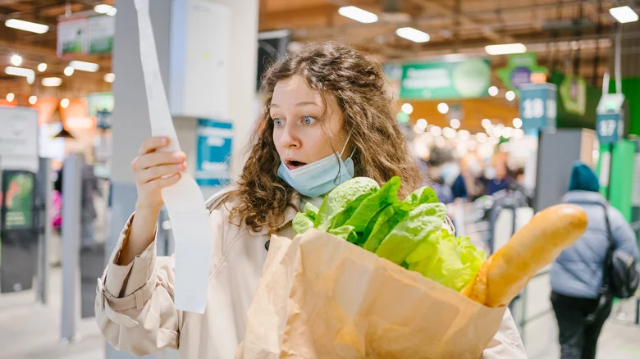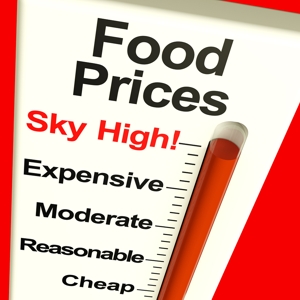It’s a trend first identified as substantial last year. And it’s growing as we speak. A majority of Canadians have made massive, dramatic changes in their shipping and eating habits. And the changes reflect the ‘new reality’ at the supermarket…

What’s going on?
Canadian food prices are still going up. And can be expected to continue rising through this year. One marginally bright light: the rate of increase seems to be slowing a little. But it’s a dim light at best.
As a result, Canadians who adopted ’emergency’ food shopping and dining adjustments during the COIVD Crisis are refining those measures. To suit a world in which prices will remain ‘too high’ indefinitely.
Farmtario Senior Editor John Greig recently offered a detailed analysis of how our food choices and dining habits are changing – probably for the long run.
Here to stay
Greig says that, unhappily, high food prices are here to stay. At least for the foreseeable future. At the root of the major, often disturbing changes is the reality that wages can’t keep pace with rising prices. And several specific tactics have emerged as central to the way most folks are coping. Or trying to.
Addicted to discounts
Greig says Canadian shoppers are ‘addicted to discounts’. And that’s why the recent consumer backlash against Loblaw’s for cutting their clearance discounts reached such a feavered pitch.
Greig notes that, in spite of the record profits reported by the supermarket giants last year, overall revenues are trending down. Put another way, folks who spent $100 a week on groceries before the Pandemic would now have to spend at least $122 for the same grocery basket. And they either can’t, or won’t pay extra.
That means people are buying cheaper foods and less of them. And that’s worrying the producers.
Emphasisng essentials
Grocery shoppers are definitely prioritising their grocery purchases, and emphasising the essentials. They’re making shopping lists, and sticking to them. One way grocers have been used to, to pad their profits, is impulse buying (of non-essenetials). Another is luring shoppers to buy more than they need with BOGO and multi-item sales. Desperate, cash-strapped customers just aren’t biting at those ‘specials’ any more.
“Thirty-two per cent of us have said, ‘You know what? I’m going to put together my shopping list and I’m just going to buy what I need.’” says Carman Allison, Vice-president of Thought Leadership with Neilson IQ marketing research. “I know for a lot of people that’s their primary focus right now as a savings strategy.”
And he adds, 80 percent of consumers have become more circumspect in their grocery shopping habits over just the past 3 months.
Brand loyalty disintegrating
Allison told Grieg there is ample evidence that a majority of Canadians are breaking brand-loyalty ties forged over decades or even lifetimes of shopping by the same ‘rules’.
One of the first dynamics the economists expected to change under the pressure of rising food prices was for consumes to abandon their familiar name-brand products for less expensive – but equivalent – store and discount brands. The latter can cost up to 25 percent less.
As a direct result, ‘Dollar’ and ‘Discount’ stores are seeing significant increases in food and home-related products. And that doesn’t benefit Canadian farmers.
But even that isn’t enough to make up the slack between income and costs. Allison says a growing cadre of Canadians Neilson asked recently said they’re simply eating more leftovers, and others are simply eating up to 20 per cent less food.
My take
Grieg is talking through a farmer-oriented megaphone in his editorial. But it’s easy to see what’s going on. Farmers are facing growing costs while seeing dwindling sales – albeit a slow decline. All because more and more folks can’t afford high supermarket prices.
At the same time, prices at the supermarket continue to rise, and consumers are even less able, on balance, to afford the farmers’ products. The bottom line? The wider the gap becomes between producers and consumers, the worse it gets for us all.
Something has to give!
~ Maggie J.

